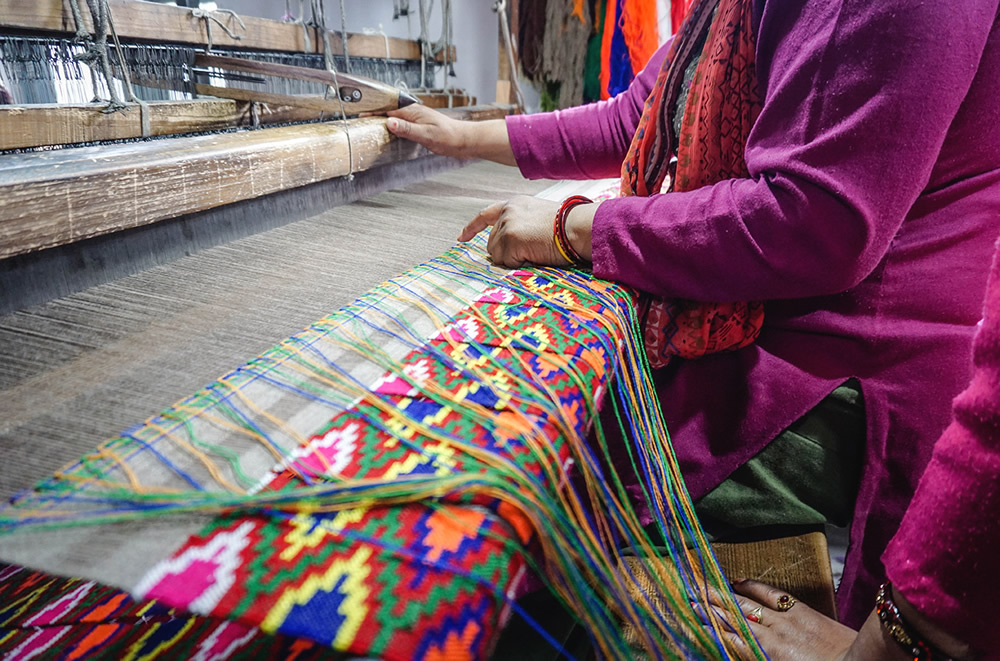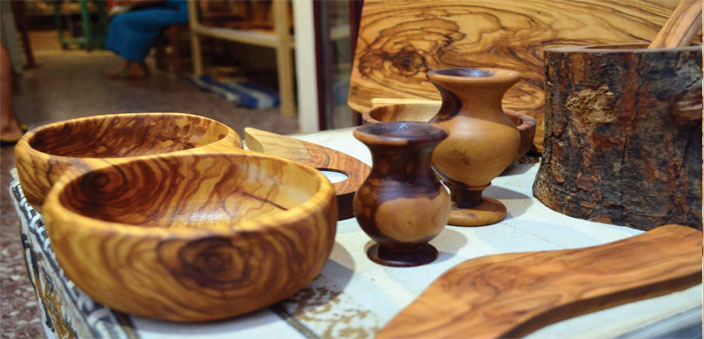The north Indian state of Hiamchal is famous for its vivid culture, a culture derived and based on the Himalyas. The art has the richness of the Pahari paintings and the vibrance of colours in the Kullu shawls,hand designed and woven they are collector’s item. In this blog we will discuss some fine points of the art and culture of Himachal Pradesh .
Pahari Paintings

A popular term for the miniature paintings of Himachal Pradesh, Pahari painting is one of the most important and distinctive gifts of India to the world of art. It is composed of two schools of paintings with very different styles – Basohli, which is bold and intense, and Kangra, which is more delicate and lyrical. It is closely related to Rajasthani painting, which is also a popular form of painting in the state, and both have a preference for illustrating the cowherd god Krishna.
In addition to mythological subjects, Pahari painting also features figures from the Argot poetry and folk songs of Lord Krishna and the lord Rama. This style of painting was particularly popular in the 11th to 16th centuries, when the Hindu Vaishnava cult had influenced Hindi and Sanskrit poets. The most renowned example of Pahari art is the Devi Mahatmya manuscript, which contains scenes from the puranas and the epics.
Some towns in Himachal Pradesh also feature examples of the traditional art form. In some towns, Pahari paintings adorn the walls and floors of homes. These paintings have evolved over centuries, and are often displayed in a king or queen’s room during special ceremonies. Alternatively, they are also displayed in the honeymoon room of newlyweds. In the region, these paintings are known as kamdeo, and are a symbol of togetherness after marriage.
Kullu Shawls and Garments

The traditional shawls made in Kullu are renowned for their vivid colours and sharp geometrical designs. Traditionally, the wool was spun into threads and woven into shawls by hand. These shawls are a significant legacy of Himachal Pradesh, and the state government provides special benefits to weavers. You can see wraps made by almost every residence in the valley.
Himachal clothing and shawls are made from wool and are decorated with delicate embroidery. The designs on them are both round and straight, forming different types of designs. These pieces are woven into clothing of all sorts and can be paired with vibrant neckties and bracelets. Whether you want to dress up or keep warm, you can find a wide selection of Himachal garments and shawls online.
The Kullu shawls and garment are one of the top Art and Culture of Himachal Pradesh are known for their fine weaving. Himachali textiles are influenced by Central Asia and Tibet. The region is renowned for its cold climate, so it is not surprising that most homes are equipped with pit looms. Wool from the region is considered incredibly pure and is often used in rituals. You can choose a fine pashmina or a coarse desar for a casual, everyday look.
Hand-woven Kullu shawls are one of the most popular items of clothing in Kullu, and they are quite expensive. However, these are organic, beautiful, and warm. The price of the shawls can range from Rs. 800/ to more than Rs. 10,000/ depending on the type of wool used and design patterns. However, it’s advisable not to go for low-cost shawls.
Himachal Embroidery – One of the top Art and Culture of Himachal Pradesh
The Himachal region of India is known for its artistic beauty and embroidered items. The Art and Culture of Himachal Pradesh embroidery is an excellent example of this beautiful culture. The craft can be found in two broad categories, rumal embroidery and leather embroidery. Both of these types of embroidery feature exquisite designs and are a form of traditional craftsmanship. Whether you’re looking for a beautiful piece of art for yourself or as a gift for someone else, the art of Himachal embroidery is sure to impress.
While the state’s pristine beauty is impressive in itself, the art of Himachal embroidery is no less beautiful. The state’s craftsmen are famous for their handicrafts, including shawls, leather works, and metalware. Handicrafts from Himachal are in high demand throughout India. Other handicrafts are made of bamboo, including colourful caps and bedsteads. Himachalis have also been able to express their culture and faith through dance. Although the dances of the region differ, they all share the same common themes: prayers, fasting, and rebirth.
The motifs used on big Rumals are usually taken from mythological stories such as the Ramayana, Mahabharata, and Bhagavad Purana. They have also been influenced by nature and local folklore. Flowers are a popular choice for the motifs. During the medieval period, the motifs on big Rumals included the Raasmandala, which depicts the mood changes of a male and female.
Woodwork of Himachal

The wooden art of Himachal Pradesh is rich in its diverse styles and designs. From simple masks to elaborate wood carving, woodwork in Himachal has evolved into an important aspect of architectural design in the region. From a purely aesthetic medium, wood carving evolved into a more practical approach in the creation of temple elements, doors, and windows. The juxtaposition of indigenous and classical practices has led to the creation of distinct trends in Himachal art.
Traditional wooden craft is a distinctive feature of Himachal Pradesh, with a wealth of trees and various wood species found in the state. Some of the state’s most popular woodcraft venues include the Kinnaur and Kullu districts. Even the more remote parts of the state are home to unique pieces of woodcarving. In addition to carving, Himachal woodcraft is also renowned for its enameling.
The wooden craft of Himachal Pradesh is a type of folk art that aims to keep alive cultural and artistic traditions. The vast array of artifacts created by rural artisans in the state over the centuries has attracted a large audience. It has also helped preserve the artistic traditions of villages. This makes Himachal Pradesh an irresistible source of fascination. Toys and sculpture are also examples of the wood craft of Himachal Pradesh.
Folk And Dances of Himachal

Himachal Pradesh is known as the land of God. The folk and dances of the state are rich and varied. Many of these dances are still practiced today for different occasions and to appease the Almighty. The state is home to many dance forms and resources that can help you learn more about the dances of India. This article will provide you with a brief overview of the state’s dances.
The Kullu Natti dance is a popular dance, performed by the tribal communities of the region. The dancers wear traditional clothes and play musical instruments. The Gaddis dance, which originated in the Himachals, is a particularly striking dance performance. Gaddis dancers wear richly studded silver ornaments and play drums. The most popular folk drama of Himachal Pradesh is the Karayila, which includes parodies, skits and small playlets. It features sharp satire of social and bureaucratic issues.
Another dance form in Himachal Pradesh is the Naina Devi dance. This performance is often performed in temples during the harvest season and features mainly female dancers. Different dance themes are represented in this form, including a love story between a king and a village girl, business dealings between two men, and more. Regardless of the dance’s theme, it’s sure to evoke a range of emotions in the audience.
Music Of Himachal – One of the top Art and Culture of Himachal Pradesh

The music of Himachal Pradesh reflects the complex hill topography and is rooted in the basic emotions and typical Socio-cultural identity of the state. The melodies and rhythms of Himachali folk songs become slower the higher the altitude. In fact, the slow rhythms and rhymes of Himachali folk songs are the best representations of the slow character of life in the interior valley. The traditional Himachali music is often performed in a tribal style, where the singers perform their music in unison.
Himachali folk music can be classified as classical and folk, and is often associated with everyday life. Unlike classical Indian music, Himachali folk songs are not strictly religious and are largely based on everyday life. The themes of the folk songs often relate to religious beliefs, history, and Puranas. They are usually accompanied by musical instruments, and are performed during festivals. The melodies of Himachali folk music are often reminiscent of traditional Indian classical music, such as Samskara, which originates from the north of India. The raga asa is another popular form of Himachali folk music. This type of song is often performed during weddings and is very popular in the Kullu Valley. It is a group song where the girls sing a verse, and the boys answer from the other peak. Laman embodies the essence of love and devotion in its music. It is not unusual to hear a young child perform this song.

